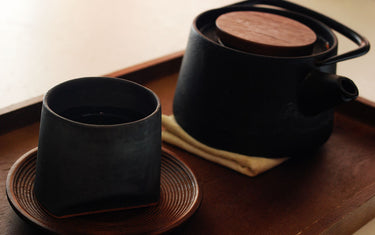Saitama Prefecture is one of the most famous tea growing areas in the Kanto region. The picking of new tea leaves begins in late April, and the famous product "Sayama tea" begins to be distributed in May.
Here we will introduce Sayama tea, one of the three major teas representing Japan.
The products we used:
About Sayama tea
Sayama tea is one of the Japan’s three best teas and a general term for tea produced in Saitama Prefecture. Of the vast land area of Saitama Prefecture, Iruma City in particular is the Mecca of Sayama tea, and its cultivation area and production are the largest in the prefecture.
Originally, tea is well grown in warm regions, but Saitama Prefecture is a cold region. Therefore, it is said that the tea leaves grow thicker and plumply, and the flavor becomes even richer.
Sayama tea in particular is rich in umami ingredients such as amino acids, and contains high levels of caffeine and catechins. This provides us a complex flavor and richness.
After cultivated carefully, new tea leaves are picked and sorted by skilled craftsmen using a traditional fire-roasting method called "Sayama hi-ire".
Features of Sayama tea
Just as described in a song as "Shizuoka for color, Uji for aroma, Sayama for taste," Sayama tea is characterized by its good taste and rich flavor.
In addition to being grown in cold regions, the tea is characterized by a unique roasting technique called "Sayama hi-ire," which maximizes the aroma and flavor of the tea. The fresh and mellow fragrance that tickles our nostrils is just like a drinkable aroma.
New tea season
In the tea fields in Iruma City, the cutting work is carried out with a special machine from around the middle of March, and the picking work starts from the end of April.
In early May, new tea is in season, with new tea leaves appearing on the shelves of teahouses and other stores.
Tea is closely related to the daily life of Japanese people, including tea ceremonies and breaktime sips. The new tea season is considered to last 88 days from the first day of spring, in other words 88 nights from the first day of spring to around May 20, which is not a long period.
In particular, the taste of Ichibancha, which stands for the tea which leaves are firstly picked up, which can only be tasted at this time of year, is characterized by an exceptionally rich, sweet and deep taste.
How to brew delicious tea
1. Cool off the hot water
Pour boiling water up to the eighth of a teacup. This is done to cool off the hot water as it spoils the tea scent. At the same time, it is also effective to warm up the teacup so that the poured tea is not cooled off.
2. Put tea leaves in the teapot.
Rough volume is 2 grams for one person, 4 grams for two and 6 grams for three. In case the tea leaves are too few, the aroma and taste will be light and unsatisfactory, but if they are too much, it will be bitter and make it difficult to drink. The key of brewing delicious tea is to use the right amount of leaves.
3. Pour hot water into the teapot.
After cooling off the hot water into around 80 to 90℃ as explained in 1, pour it from the teacup into a teapot with tea leaves. Pour it slowly so that it is poured on the whole tea leaves.
4. Make tea leaves steamed.
After pouring hot water into the teapot, and putting on the lid, make it steamed for about 30 seconds to 1 minute. Estimated time is about 30 seconds for the deeply steamed tea, about 1 minutes for Sencha and 2 minutes for Gyokuro.
5. Pour tea into teacups.
When brewing tea for several people, pour the tea evenly into each cup in turn, such as pouring about 40 ml into the first cup and then about 40 ml into the next cup, so that the flavor is evenly distributed to all cups.
In addition, tea has a concentrated flavor and umami in the last drop.It is said that the last drop of tea determines the taste of the tea. Therefore, pour every last drop of tea into the cup.
Summary
The tea leaves grown in cold regions have a thick taste and rich flavor, and “Sayama tea” is often appreciated for its taste. How about enjoying tea culture with “Sayama tea” which has been behind Japanese history and tradition?
It is also recommended not only for your relaxing time, but also for a gift for your important person.
















